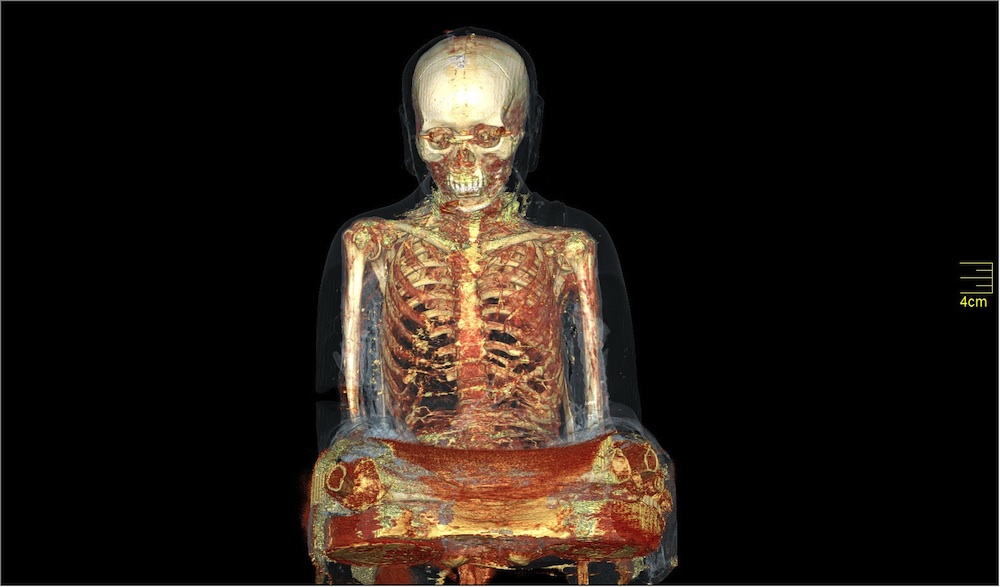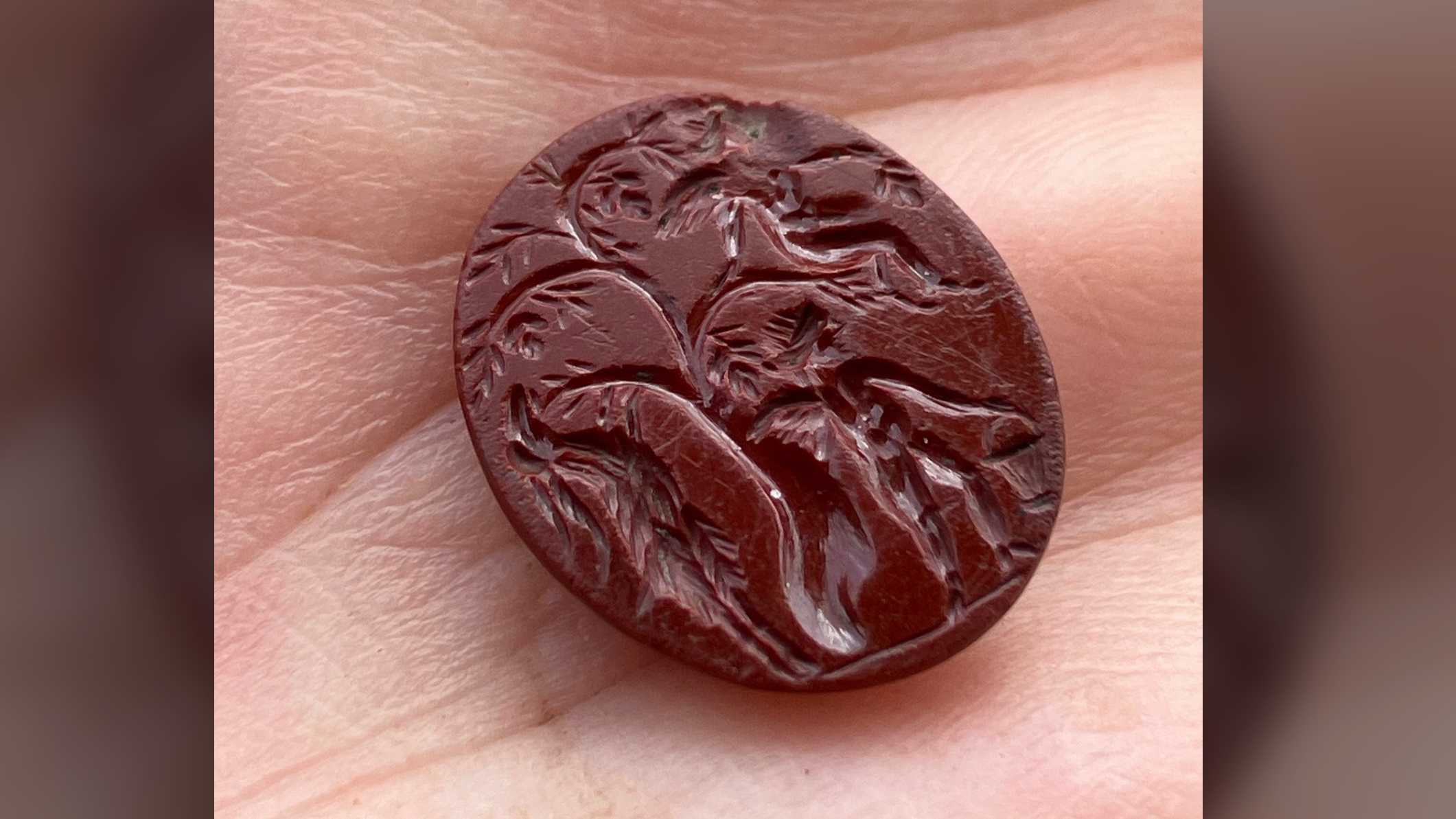
Editor's Note: This story was updated on March 3 at 10:10 a.m. E.T.
A Chinese statue of a sitting Buddha has revealed a hidden surprise: Inside, scientists found the mummified remains of a monk who lived nearly 1,000 years ago.
The mummy may have once been a respected Buddhist monk who, after death, was worshipped as an enlightened being, one who helped the living end their cycle of suffering and death, said Vincent van Vilsteren, an archaeology curator at the Drents Museum in the Netherlands, where the mummy (from inside the Buddha statue) was on exhibit last year.
The secret hidden in the gold-painted statue was first discovered when preservationists began restoring the statue many years ago. But the human remains weren't studied in detail until researchers took scans and samples of tissue from the mummy late last year.
The mysterious statue is now on display at the Hungarian Natural History Museum in Budapest. [Image Gallery: Inca Child Mummies]
Mysterious history
The papier-mâché statue, which has the dimensions, roughly, of a seated person and is covered in lacquer and gold paint, has a murky history. It was likely housed in a monastery in Southeastern China for centuries. It may have been taken from the country during the Cultural Revolution, a tumultuous period of social upheaval in Communist China starting in 1966 when Chairman Mao Zedong urged citizens to seize property, dismantle educational systems and attack "bourgeois" cultural institutions. (The current owner bought the statue legally.)
Get the world’s most fascinating discoveries delivered straight to your inbox.
The statue was bought and sold again in the Netherlands, and in 1996, a private owner decided to have someone fix the chips and cracks that marred the gold-painted exterior. However, when the restorer removed the statue from its wooden platform, he noticed two pillows emblazoned with Chinese text placed beneath the statues' knees. When he removed the pillows, he discovered the human remains.
"He looked right into the bottom of this monk," van Vilsteren told Live Science. "You can see part of the bones and tissue of his skin."
The mummy was sitting on a rolled textile carpet covered in Chinese text.
Researchers then used radioactive isotopes of carbon to determine that the mummy likely lived during the 11th or 12th century, while the carpet was about 200 years older, van Vilsteren said. (Isotopes are variations of elements with different numbers of neutrons.)
In 2013, researchers conducted a CT scan of the mummy at Mannheim University Hospital in Germany, revealing the remains in unprecedented detail. In a follow-up scan at the Meander Medical Center in Amersfoort, Netherlands, the researchers discovered that what they thought was lung tissue actually consisted of tiny scraps of paper with Chinese text on them.
The text found with the mummy suggests he was once the high-status monk Liuquan, who may have been worshipped as a Buddha, or a teacher who helps to bring enlightenment after his death.
Last year, the mummy was on display at the "Mummies – Life Beyond Death" exhibit at the Drents Museum in Netherlands, before moving to the Hungarian Natural History Museum in Budapest.
Common practice
Mummies from this period are fairly common in Asia. For instance, researchers in Mongolia recently found a 200-year-old mummified monk still in the lotus position, the traditional cross-legged meditative pose.
It's not clear exactly how Liuquan became a mummy, but "in China, and also in Japan and Laos and Korea, there's a tradition of self-mummification," van Vilsteren said.
In some cases, aging Buddhist monks would slowly starve themselves to eliminate decay-promoting fat and liquid, while subsisting mainly on pine needles and resin to facilitate the mummification process, according to "Living Buddhas: The Self-Mummified Monks of Yamagata, Japan," (McFarland, 2010). Once these monks were near death, they would be buried alive with just a breathing tube to keep them holding on so they could meditate until death.
"There are historical records of some aging monks who have done this practice," van Vilsteren said. "But if this is also the case with this monk is not known."
Editor's Note: This story was updated to note that the current owner of the Buddha bought the statue legally.
Follow Tia Ghose on Twitterand Google+. Follow Live Science @livescience, Facebook & Google+. Originally published on Live Science.

Tia is the managing editor and was previously a senior writer for Live Science. Her work has appeared in Scientific American, Wired.com and other outlets. She holds a master's degree in bioengineering from the University of Washington, a graduate certificate in science writing from UC Santa Cruz and a bachelor's degree in mechanical engineering from the University of Texas at Austin. Tia was part of a team at the Milwaukee Journal Sentinel that published the Empty Cradles series on preterm births, which won multiple awards, including the 2012 Casey Medal for Meritorious Journalism.

